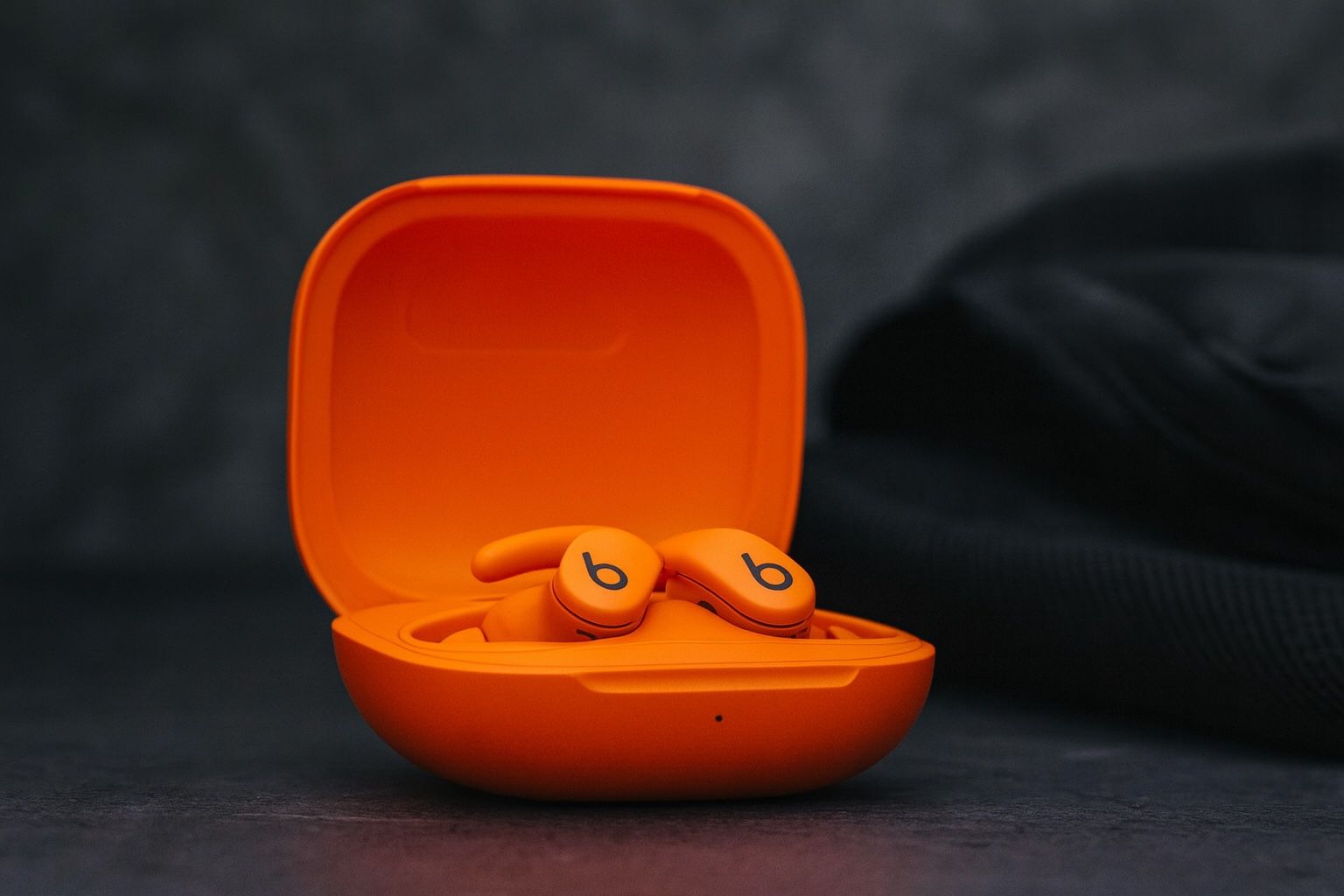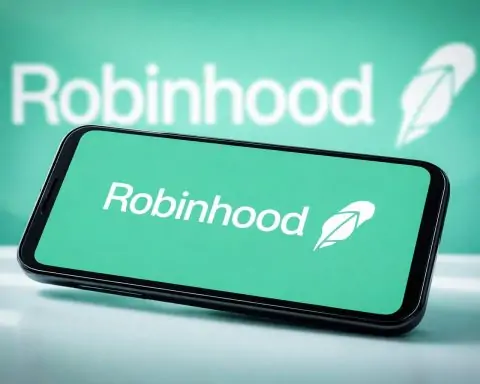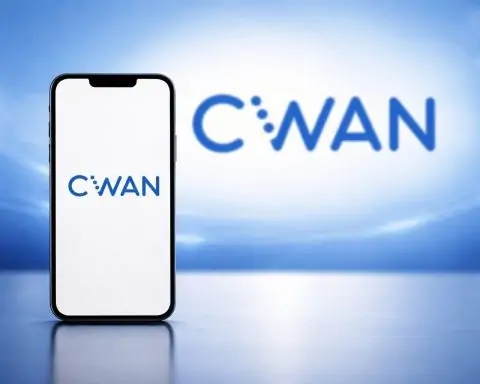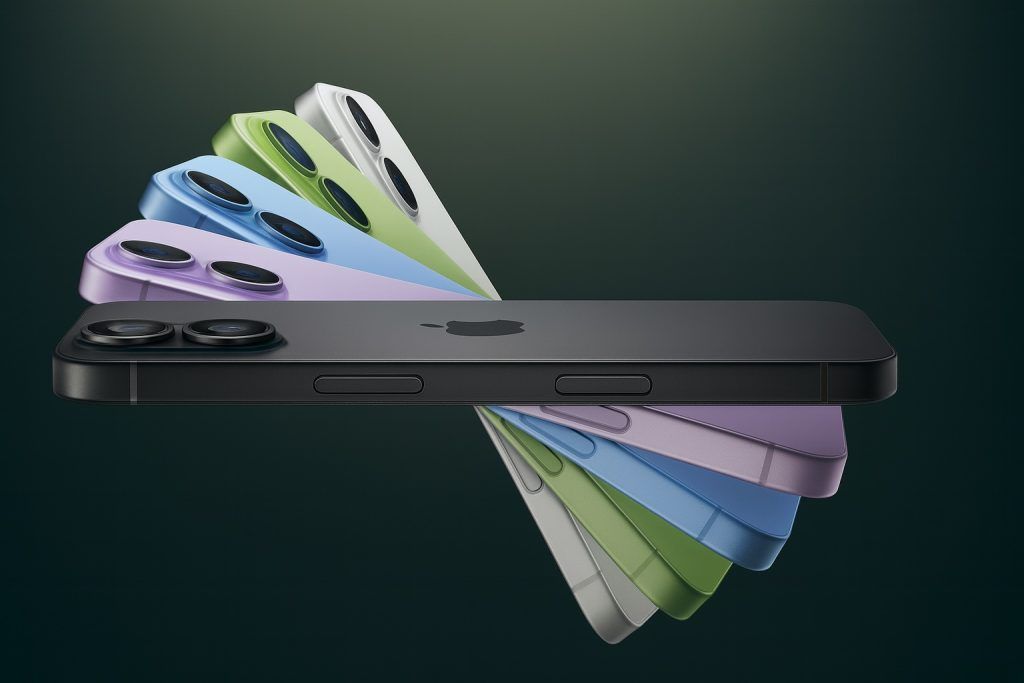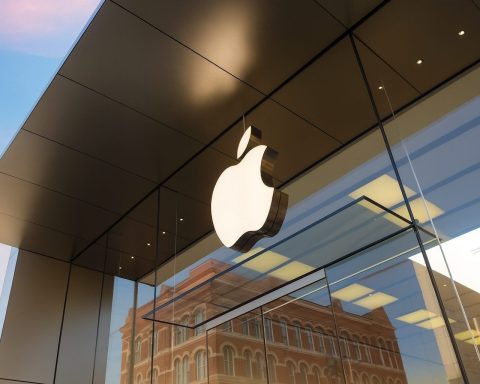- Apple’s Beats brand has launched the Powerbeats Fit, a $199.99 pair of wireless fitness earbuds that succeed the 2021 Beats Fit Pro, rebranded under the iconic Powerbeats name [1] [2].
- Key upgrade – comfort: The new model features redesigned silicone wingtips that are 20% more flexible than before, providing a more secure and comfortable in-ear fit during intense workouts [3]. This aims to address past complaints of discomfort and ensure the buds stay put without needing over-ear hooks.
- Smaller case, same stamina: Despite a 17% smaller charging case that’s easier to pocket, the Powerbeats Fit still deliver up to 7 hours of playback (6 hours with noise cancelling on) per charge and around 30 hours total with the case – identical to the Beats Fit Pro’s battery life [4] [5]. A 5-minute Fast Fuel charge yields about an hour of listening in a pinch [6].
- Tech and features: The earbuds use Apple’s H1 chip (not the newer H2), so while they lack some next-gen tricks, they still offer Active Noise Cancellation, Transparency Mode, Adaptive EQ, and Personalized Spatial Audio with head tracking [7] [8]. Users get one-touch pairing, hands-free “Hey Siri”, Find My support, and seamless device switching in the Apple ecosystem [9]. Android users are supported via the Beats app, which enables features like a Fit Test to select the ideal ear tip size and customizable controls [10].
- Available now: The Powerbeats Fit is on sale starting today through Apple and retailers for $199.99, undercutting Apple’s flagship AirPods Pro (priced $249) [11]. It comes in four colors – Jet Black, Gravel Gray, Power Pink, and Spark Orange – the last one cleverly matched to Apple’s new orange iPhone 17 Pro [12]. Early reviews note that aside from the comfort improvements, this is a modest update – great for new buyers or those who found the prior model uncomfortable, but not a must-have upgrade if you already own Beats Fit Pro [13].
An Evolution of Beats Fit Pro Under a New Name
Apple is positioning the Powerbeats Fit as both the next evolution of the Beats Fit Pro and a fresh addition to the Powerbeats family [14]. In fact, Beats explicitly calls it an “evolution” of the 2021 Fit Pro earbuds, now unified under the Powerbeats branding for a clearer fitness lineup distinction [15]. “Reintroducing Beats Fit Pro as Powerbeats Fit—alongside Powerbeats Pro 2—unifies our lineup under a name synonymous with athletic performance and gives customers a clearer choice between two distinct, fitness-first form factors,” said Oliver Schusser, Apple’s VP of Music, Sports, and Beats [16]. The rebranding leverages the strong recognition of the Powerbeats name (long associated with sport earbuds) while offering users a choice: Powerbeats Pro 2 with its traditional over-ear hooks, or the new Powerbeats Fit with its in-ear wingtip design.
Despite the name change and a few tweaks, the DNA of the Beats Fit Pro remains largely intact. “The earbuds aren’t a major redesign of the Beats Fit Pro by any stretch of the imagination,” notes Andrew Liszewski of The Verge [17]. The Powerbeats Fit carry over the core features and look of their predecessor, focusing upgrades on comfort, durability, and design details rather than a complete overhaul. In other words, Beats is fine-tuning an already successful formula: the Fit Pro were widely praised as some of Apple’s best workout earbuds, so the Powerbeats Fit build on that foundation rather than reinvent it.
Wingtip Redesign for a Secure, Comfortable Fit
The standout change is the redesigned wingtip. Beats engineers made the flexible ear wing 20% more pliable than on the previous model, which should help the buds fit more securely in a wider variety of ears without causing pressure or pain [18]. This soft silicone wing gently tucks into the upper ear (the concha), anchoring the earbud in place even during vigorous movement [19]. The idea is to deliver “the same level of stability as the over-ear hooks found on the Powerbeats Pro 2, but without the bulk,” according to Beats [20]. Many users love the locked-in feel of ear hook headphones for exercise, but dislike the extra hardware; the Powerbeats Fit’s internal wingtip aims to strike that balance of security and comfort.
In addition to the more forgiving wing material, Beats now includes four sizes of silicone ear tips (XS, S, M, L) in the box, up from three previously [21] [22]. Having an extra-small tip option should help those with smaller ear canals get a proper seal. A good fit is crucial not only for comfort and stability, but also for optimal sound and noise cancellation performance. For further personalization, the companion Beats mobile app (on Android) offers a “Fit Test” feature that plays sound and analyzes leakage to confirm if you’ve chosen the right tip size [23] – a simple but practical addition for maximizing comfort and audio quality.
Beats also touts improved durability with this release. The Powerbeats Fit earbuds and even their charging case carry an IPX4 water-resistance rating [24], meaning they can withstand sweat, rain, and splashes from any direction. (Notably, the Beats Fit Pro earbuds were IPX4, but their case wasn’t – now both pieces are sweat-resistant). While you still shouldn’t submerge them or expose them to heavy rainfall for long, typical gym sessions or runs in light rain are well within their comfort zone. This matches the durability of the larger Powerbeats Pro line, though it falls short of the IP57 rating that Apple’s latest AirPods Pro 3 boast for dust and water (those can even survive brief submersion) [25] [26]. Still, for most workout scenarios, IPX4 is ample protection, and it’s clear Beats has designed these earbuds to handle the wear and tear of daily exercise, from sweat to the occasional accidental drop.
Same Apple H1 Brain, So-So Upgrades in Tech Specs
Under the hood, the Powerbeats Fit use Apple’s H1 chip, the same chip that powered the Beats Fit Pro (as well as the original AirPods Pro and many other Apple/Beats earphones in recent years). This means no upgrade to the newer H2 chip that’s found in Apple’s AirPods Pro 2/3 and the Powerbeats Pro 2. What does that mean in practice? The Powerbeats Fit still enjoy all the core features that Apple users expect – quick one-tap pairing, hands-free “Hey Siri” voice commands, automatic switching between your iPhone, Watch, Mac, etc., Audio Sharing with another pair of Apple/Beats headphones, and Find My tracking for the buds [27]. These features are powered by the H1 and work seamlessly through iCloud for iOS users.
However, sticking with H1 also means the new Powerbeats don’t get the enhanced capabilities that H2 brings. For instance, Apple’s H2 enables improved Adaptive Transparency and more advanced computational audio processing. Active Noise Cancellation on the Powerbeats Fit is effective but not class-leading – don’t expect it to match the AirPods Pro 3’s noise filtering, which benefits from the H2 chip’s processing [28]. In fact, noise cancellation performance is said to be roughly on par with the AirPods Pro 2 (which uses H2) or its predecessor Beats Fit Pro – good at silencing consistent low-frequency sounds like hums or engine noise, but not a massive leap forward [29]. Transparency Mode is available for situational awareness, and it works as expected to pipe in outside sound when you need to hear your environment.
On the audio side, Beats retained its custom acoustic platform and proprietary drivers tuned for a balanced, energetic sound. According to an early hands-on review, the sound profile is quite similar to the AirPods Pro 3 – clean and punchy – though with a bit more bass presence than before [30] (in true Beats fashion) which fitness enthusiasts may appreciate during workouts. The earbuds also support Personalized Spatial Audio with dynamic head tracking (so movies and compatible music can have an immersive surround effect tailored to your ear shape) and Adaptive EQ, which automatically adjusts the sound to your ear’s fit/seal in real time [31]. These are the same audio features the Beats Fit Pro offered, meaning sound quality should be nearly identical between the old and new model. That’s not a bad thing – Beats Fit Pro were well-reviewed for sound – but it underscores that this refresh is about refinement (fit and form) rather than new audio innovations.
Portability and Battery Life
One welcome improvement is the smaller charging case. Beats shaved about 17% off the case size compared to the Beats Fit Pro’s case [32] [33]. The old case wasn’t huge, but it was a bit bulky in a pocket; the new one should be more coat- and pocket-friendly for everyday carry. Importantly, this size reduction comes with no sacrifice in battery longevity. The Powerbeats Fit still promise up to 7 hours of continuous listening on the earbuds (with ANC off; around 6 hours with ANC on) and up to 30 hours total including the charge held in the case [34]. These numbers mirror the previous model’s stamina and match many competitors in this class. For context, 7 hours per charge is slightly more than AirPods Pro (around 6 hours), reflecting the Powerbeats Fit’s focus on workouts – they’ll reliably last through long training sessions or marathon runs without needing a pit stop in the case.
When you do need to recharge, the case uses USB-C (Apple has been standardizing on USB-C lately, and these follow suit). There’s no mention of wireless charging capability for the case – typically Beats cases haven’t supported Qi wireless charging, unlike AirPods cases. But a quick top-up is fast via cable: with Fast Fuel, a mere 5-minute charge in the case gives about 1 hour of playback [35], handy if you realize you’re low on battery as you’re heading out for a run. A full charge of the buds and case will give you days worth of typical use. And as noted, IPX4 sweat resistance extends to the case too [36], so you can toss it in a gym bag or accidentally splatter water on it without worry – just don’t drop the case in a puddle or submerge it.
Pricing, Colors, and Availability
The Powerbeats Fit launch at a price of $199.99 in the US (and equivalent pricing in other regions), which is exactly the same price point the Beats Fit Pro held [37]. In essence, Beats is replacing the old model without a price hike. At $200, these earbuds come in notably cheaper than Apple’s flagship AirPods Pro 3 (which cost $249) and the over-ear-hook Powerbeats Pro 2 ($249) [38]. This positioning suggests Apple wants an attractive mid-range option for fitness enthusiasts who might balk at the $250 tier. As tech outlet The Tech Buzz notes, the Powerbeats Fit are essentially competing with AirPods Pro on active features and sound, but at a lower price point to lure value-conscious buyers in the Apple ecosystem [39].
Buyers also get a fresh coat of paint – quite literally. The Powerbeats Fit come in four color options: Jet Black and Gravel Gray for those who prefer subtle tones, or a bit of flair with Power Pink (a vibrant pink) and Spark Orange [40]. The orange model is drawing attention because it coordinates perfectly with the new orange iPhone 17 Pro. Beats clearly anticipated this fashion pairing – “the spark orange Powerbeats Fit almost feels like a mandatory upgrade” if you’ve got the matching orange iPhone, quips The Verge humorously [41]. All colors feature the Beats “b” logo and a matte finish on the buds and case.
Availability: Apple and authorized retailers began taking orders for Powerbeats Fit on September 30, 2025, with units shipping and hitting stores by October 2 [42]. So as of now, they are available for immediate purchase. Given the popularity of Beats in the fitness market and the tie-in with the iPhone’s new color, initial demand could be strong (the limited-edition color might entice some to buy sooner rather than later). There’s no indication of supply constraints; these seem to be a regular addition to the lineup going forward, effectively phasing out the Beats Fit Pro. Apple’s online store has already listed the Powerbeats Fit in place of the older model [43].
Early Impressions and Outlook
Early hands-on reviews and expert commentary suggest that the Powerbeats Fit is a thoughtful iterative update rather than a revolutionary one – a move that makes a lot of sense for its target audience. “The Powerbeats Fit look like a worthy update to the Beats Fit Pro,” writes Chance Miller of 9to5Mac [44], highlighting that the main draw is the improved comfort and the branding alignment. For existing Beats Fit Pro owners, the benefits of upgrading will primarily be if you experienced fit or comfort issues with the old model. The new flexible wing and extra ear tip size could make a noticeable difference for those users. However, if your Beats Fit Pro fit you fine and you’re satisfied with them, there’s little new in sound quality or features to justify rushing out to upgrade. In terms of performance, you’re getting the same audio experience and battery life as before [45] [46].
For new buyers in the market for workout earbuds – especially iPhone users – the Powerbeats Fit now represent a very compelling option. They essentially bridge a gap in Apple’s lineup: offering more secure fit than AirPods Pro for high-intensity activities (thanks to the wingtip), but in a smaller, cheaper package than the ear-hook Powerbeats Pro 2. Apple’s strategy here is clear. “They’re not going head-to-head with Apple’s flagship AirPods Pro 3 on premium features, but instead focusing on fit, comfort, and value,” observed one tech outlet about the launch [47]. Indeed, the Powerbeats Fit cater to fitness enthusiasts who prioritize earbuds staying in place and surviving sweat over having every cutting-edge feature. They also appeal to Android users more than AirPods do – Beats makes a point to support Android fully via its app, something the AirPods line doesn’t do as comprehensively [48] [49].
Competition-wise, Beats is effectively competing with itself (AirPods) and other workout-focused buds. Rival brands like Sony and Bose offer class-leading noise cancellation and sound in their earbuds, but those products (e.g., Sony’s WF-1000XM5, Bose’s QuietComfort Earbuds II) typically lack any sort of wing or hook for stability and are priced higher than $200. By contrast, the Powerbeats Fit carves out a niche as the comfortable, secure alternative – even Apple’s AirPods Pro 3 can’t match the winged design for stability, and while AirPods are now more rugged (IP57), some athletes will still prefer an earbud that locks in place. Beats is likely betting that comfort and fit are the next battleground in the saturated wireless earbuds market, and it’s doubling down on the idea that an earbud made for workouts should feel great even after hours of wear [50] [51].
Time will tell if the 20% flexier wing delivers the promised comfort gains in practice – that will be the real test. If user feedback shows a significant comfort improvement, the Powerbeats Fit could become the new go-to recommendation for gym headphones, much as the Beats Fit Pro was praised in its time. At the very least, Beats has addressed one of the few criticisms of the previous model (fit discomfort for some) while maintaining everything that worked, including the price. For $199, you’re getting a pair of earbuds that seamlessly integrate with Apple devices, pack effective noise cancelling and rich sound, and are designed not to fall out or falter when you’re in the middle of a hard workout. By refining rather than reinventing, Apple’s Beats may have quietly produced a fitness audio hit that feels just right for its niche.
Sources: MacRumors [52] [53]; The Verge [54] [55]; Engadget via 9to5Mac/Techmeme [56] [57]; 9to5Mac [58] [59]; Gear Patrol [60] [61].
References
1. 9to5mac.com, 2. 9to5mac.com, 3. www.macrumors.com, 4. www.theverge.com, 5. 9to5mac.com, 6. www.macrumors.com, 7. 9to5mac.com, 8. www.theverge.com, 9. www.theverge.com, 10. www.theverge.com, 11. www.techbuzz.ai, 12. www.theverge.com, 13. www.theverge.com, 14. www.macrumors.com, 15. www.macrumors.com, 16. 9to5mac.com, 17. www.theverge.com, 18. www.macrumors.com, 19. www.macrumors.com, 20. www.techbuzz.ai, 21. 9to5mac.com, 22. 9to5mac.com, 23. www.theverge.com, 24. www.macrumors.com, 25. www.gearpatrol.com, 26. www.gearpatrol.com, 27. www.theverge.com, 28. www.techbuzz.ai, 29. www.macrumors.com, 30. www.macrumors.com, 31. www.macrumors.com, 32. 9to5mac.com, 33. www.macrumors.com, 34. www.theverge.com, 35. www.macrumors.com, 36. www.macrumors.com, 37. 9to5mac.com, 38. www.techbuzz.ai, 39. www.techbuzz.ai, 40. www.theverge.com, 41. www.theverge.com, 42. www.macrumors.com, 43. 9to5mac.com, 44. 9to5mac.com, 45. www.macrumors.com, 46. 9to5mac.com, 47. www.techbuzz.ai, 48. www.macrumors.com, 49. www.theverge.com, 50. www.techbuzz.ai, 51. www.techbuzz.ai, 52. www.macrumors.com, 53. www.macrumors.com, 54. www.theverge.com, 55. www.theverge.com, 56. 9to5mac.com, 57. www.techbuzz.ai, 58. 9to5mac.com, 59. 9to5mac.com, 60. www.gearpatrol.com, 61. www.gearpatrol.com
